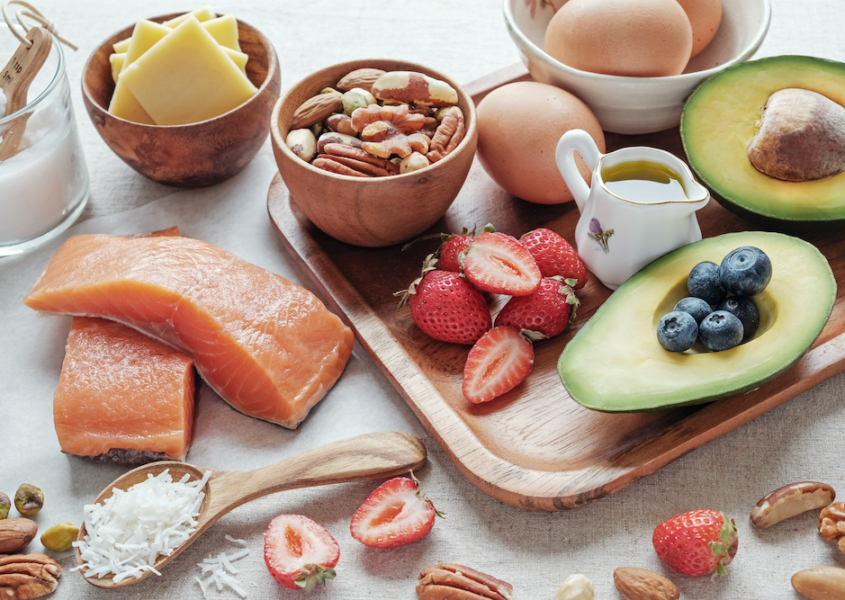Breaking Down the Pros and Cons: Keto vs. Paleo Diet – How to Choose the Best Fit for You
Are you torn between the keto vs. paleo diet? Don’t worry, you’re not alone. With so many popular diet trends out there, it can be challenging to determine which one is the best fit for you. In this article, we’ll break down the pros and cons of the keto diet and the paleo diet, giving you the information you need to make an informed decision. By understanding the pros and cons of each diet, you can choose the one that aligns with your goals, preferences, and lifestyle.
Understanding the Keto Diet
The keto diet, short for ketogenic diet, is a low-carb, high-fat diet that has gained popularity in recent years. The main goal of the keto diet is to put your body into a state of ketosis, where it burns fat for fuel instead of carbohydrates.
The keto diet typically consists of foods such as meat, fish, eggs, dairy products, nuts, seeds, oils, and low-carb vegetables. However, it requires you to avoid or limit foods high in carbohydrates, such as grains, sugar, and starchy vegetables like potatoes.
While the keto diet has gained popularity for its potential weight loss benefits, it has also been studied for its positive effects on certain health conditions. Research suggests that the keto diet may help improve insulin sensitivity, reduce inflammation, and even manage epilepsy in some cases.
Understanding the Paleo Diet
The paleo diet, also known as the Paleolithic or caveman diet, is based on the idea of eating foods that our ancestors would have consumed during the Paleolithic era. The main concept behind the paleo diet is to eat whole, unprocessed foods and avoid foods that emerged with the advent of agriculture.
On the paleo diet, you focus on consuming lean proteins, fruits, vegetables, nuts, and seeds while avoiding grains, legumes, dairy products, processed foods, and added sugars. The idea is to eat like our ancestors did before the introduction of modern agricultural practices.
One of the advantages of the paleo diet is that it encourages the consumption of whole, nutrient-dense foods. By eliminating processed foods and focusing on fresh, natural ingredients, it can help improve overall health and nutrient intake.
The paleo diet has been associated with several potential benefits. Studies suggest that it can lead to weight loss, improve blood sugar control, and reduce the risk of certain chronic diseases, including heart disease and type 2 diabetes. Additionally, the paleo diet may help reduce inflammation and promote a healthy gut microbiome.
Pros of the Keto Diet
- Weight Loss: One of the main benefits of the keto diet is its potential for weight loss. By reducing carbohydrates and increasing fat intake, the keto diet can help suppress appetite and promote fat burning.
- Improved Insulin Sensitivity: Research suggests that the keto diet may improve insulin sensitivity, which can be beneficial for individuals with type 2 diabetes or insulin resistance.
- Potential Health Benefits: The keto diet has been studied for its potential benefits in managing certain health conditions, including epilepsy, Alzheimer’s disease, and certain types of cancer.
Cons of the Keto Diet
- Strict Carbohydrate Restriction: Following a keto diet requires strict carbohydrate restriction, which can be challenging for individuals who enjoy a variety of foods or have a busy lifestyle.
- Side Effects: Some people may experience side effects when starting the keto diet, such as the “keto flu,” which can include symptoms like fatigue, dizziness, and nausea.
- Nutrient Deficiencies: The keto diet may lead to nutrient deficiencies if not properly planned, as it restricts certain food groups that are important sources of vitamins, minerals, and fiber.
Pros of the Paleo Diet
- Whole, Unprocessed Foods: The paleo diet encourages the consumption of whole, unprocessed foods, which can improve overall nutrient intake and promote better health.
- Weight Loss: Like the keto diet, the paleo diet can also lead to weight loss, as it focuses on nutrient-dense foods that are filling and satisfying.
- Reduced Inflammation: By eliminating processed foods and focusing on whole, natural ingredients, the paleo diet may help reduce inflammation in the body.
Cons of the Paleo Diet
- Restrictive: The paleo diet can be restrictive for some individuals, as it eliminates several food groups, including grains, legumes, and dairy products.
- Limited Carbohydrate Intake: The paleo diet may not provide enough carbohydrates for individuals who engage in intense physical activity or athletes who require higher energy levels.
- Potential Nutrient Deficiencies: Depending on individual food choices, the paleo diet may lead to nutrient deficiencies if not carefully planned to ensure adequate intake of key vitamins and minerals.
How to Choose the Best Diet for You
When deciding between the keto vs. paleo diet, it’s important to consider your goals, preferences, and lifestyle. Here are some factors to consider when choosing the best diet for you:
- Weight Loss Goals: If your primary goal is weight loss, both the keto diet and the paleo diet can be effective. However, the keto diet may provide quicker results due to its focus on fat burning.
- Health Conditions: Always discuss dietary changes with your healthcare provider to make sure it’s a safe and effective fit for your needs. If you have specific health conditions, such as type 2 diabetes or epilepsy, the keto diet may be more beneficial due to its potential health benefits in managing these conditions.
- Food Preferences: Consider your food preferences and whether you can adhere to the restrictions of each diet. If you enjoy a variety of foods and find it difficult to eliminate certain food groups, the paleo diet may be more suitable.
- Sustainability: Think about which diet you can realistically maintain long-term. The keto diet may be more challenging to sustain due to its strict carbohydrate restrictions, while the paleo diet offers a more balanced approach.
- Individualized Approach: It’s important to remember that everyone is different, and what works for one person may not work for another. Experimenting with both diets and listening to your body’s response can help you determine which one is the best fit for you.
Combining Elements of the Keto Diet and Paleo Diet
If you’re torn between the keto vs. paleo diet, you may also consider combining elements of both diets to create a more personalized approach. This can allow you to reap the benefits of both diets while still enjoying a varied and sustainable eating plan.
For example, you can adopt the low-carb, high-fat principles of the keto diet while still focusing on whole, unprocessed foods as emphasized in the paleo diet. This approach can help you achieve ketosis while ensuring a nutrient-dense and balanced diet.
Additionally, incorporating intermittent fasting, where you have periods of fasting and eating within certain time frames, can also be a complementary strategy to both diets and may further enhance weight loss and metabolic benefits.
If you’re searching for a customized approach, using meal delivery service or a personal chef service like Chefs for Seniors can help you achieve your goals and make meal planning a breeze.
Disclaimer: This article is for informational purposes only and does not provide medical advice. While we at Chefs for Seniors specialize in providing healthy, customizable meals, we are not medical professionals. Always consult with your healthcare provider for medical advice, diagnoses, and treatment plans to fit your specific needs.

 shutterstock
shutterstock
 Shutterstock
Shutterstock